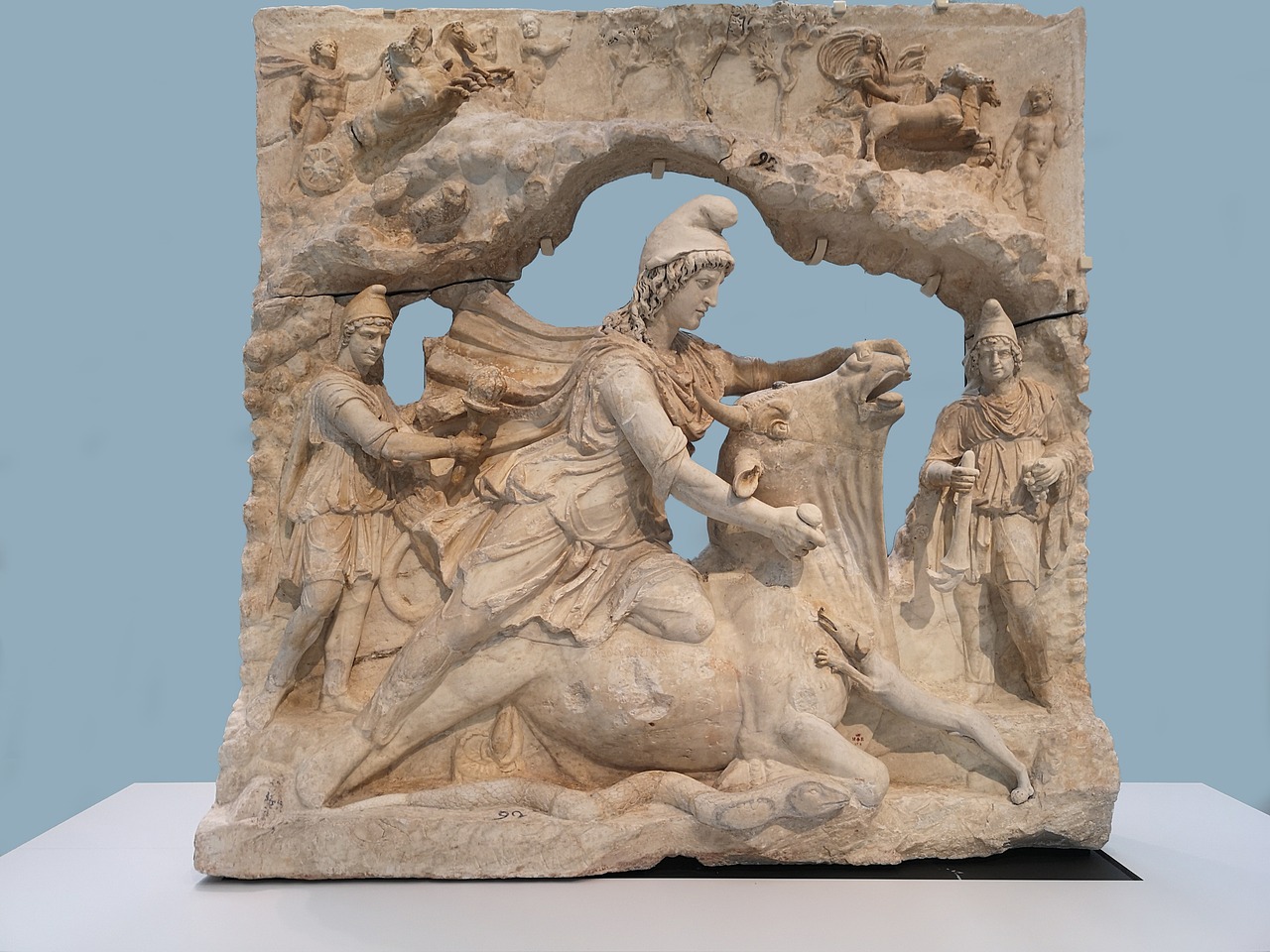In the 1st century AD, a fascinating cult emerged within the Roman Empire, dedicated to the worship of Mithras—a Romanized adaptation of the Indo-Iranian deity Mithra. Worshipers of this cult were shrouded in mystery, often associated with esoteric practices and hidden cosmic knowledge. Their rise coincided with the early spread of Christianity, which has led to various interpretations of their significance. By the 5th century, however, Mithraism mysteriously faded from existence, a disappearance that remains largely unexplained.
The exhibit titled The Mystery of Mithras at the Musée Saint-Raymond features an extensive collection of Mithraic artifacts sourced from Spain, Portugal, and other regions across the Roman Empire. This exhibition is part of a broader series exploring the enigmatic aspects of Mithras cults in Europe, with the Toulouse focus highlighting Mithraism’s prevalence in southwestern Europe. Visitors encounter an immersive experience, stepping through dimly lit spaces designed to evoke the cave-like sanctuaries known as mithraea. Statues of Cautes and Cautopates, the divine guardians of the temple, frame the entrance, drawing guests into the secretive world of Mithraism.
Unraveling Mithraic Mysteries
Given the absence of direct written records from Mithras’ followers, scholars rely on archaeological findings and insights gleaned from antiquarian sources, albeit with a critical lens. Many ancient writers held a tenuous grasp on Mithraism, and early Christian authors often depicted it in a negative light, dismissing it as a sinister sect.
Franz Cumont, a pioneering figure in Mithraic studies, faced similar interpretative challenges. Between 1894 and 1900, he compiled a two-volume work of ancient texts and artifacts, classifying Mithraism as a Roman adaptation of an Iranian state religion. Though this perspective dominated early 20th-century scholarship, it has since been contested. Lucinda Dirven, a scholar in antique religions, critiques Cumont’s assertion, suggesting he selectively interpreted evidence, favoring connections to Zoroastrianism while overlooking conflicting archaeological data. Notably, at the First International Congress of Mithraic Studies in 1971, Cumont’s theories regarding the Persian roots of Mithraism were largely refuted.
The prevailing belief is that, while the figure of Mithra can be traced in Near Eastern texts as early as 1380 BC, the Roman Mithras bears little resemblance to earlier depictions of the deity.
A prime example from the exhibit is a marble relief from Lebanon, portraying Mithras executing the iconic bull-slaying, or tauroctony, surrounded by zodiac signs. This alluring piece showcases Mithras, clad in an oriental tunic and military attire, enacting a dramatic scene reminiscent of a wrestler, as he brings about the bull’s demise. The narrative unfolds as a dog and serpent eagerly partake in the blood of the slain beast, while a scorpion lurks nearby, poised to strike.
Symbolism and Significance
Scholarly consensus posits that the tauroctony symbolizes cosmic renewal, with the bull’s demise contributing to agricultural fertility and the health of humanity. The exhibit curators, Pascal Capus and Margaux Bekas, explain that the bull—a pervasive emblem of fertility in the ancient Near East—is often depicted with its tail transformed into a plant motif, reinforcing its life-giving associations.
Despite the tauroctony’s crucial place in Mithraism, no archaeological evidence confirms that initiates reenacted the bull’s slaying in rituals. While historical texts hint at secretive rites and initiations that involved elements of bloodshed, the curators caution against accepting these accounts at face value, noting they often stem from authors biased against pagan traditions.
Mithric sanctuaries were noted for their strict hierarchical structure, with participants assigned various ranks reminiscent of military organization. This resemblance has led to the popular perception of Mithraism as a soldiers’ religion. Jean-Baptiste Cyrille-Lytras, the exhibition’s coordinator, notes this affiliation likely arose due to the social connections formed among troops stationed along the empire’s borders. Nonetheless, existing evidence suggests that Mithraism attracted individuals from diverse backgrounds, including tradespeople and bureaucrats.
The role of women in Mithraism has sparked heated debate. While historical analyses have painted the cult as a predominantly male sphere, the curators contend that the lack of female inscriptions does not definitively exclude their participation. Matthew McCarty, a Canadian historian, echoes this sentiment, noting that although women are less visible in the record, recent archaeological discoveries hint at communal rituals involving broader societal engagement with Mithras worship.
The Decline of Mithras
Lucinda Dirven posits that contemporary scholars are shifting perspectives on Mithraism, moving away from rigid interpretations rooted in Cumont’s theories. Researchers are increasingly recognizing that local leaders, or pater, played significant roles in shaping their communities’ religious practices. Therefore, the focus has shifted from generalized Mithraic practices across the empire to localized community expressions of faith.
Notably, although Mithraism flourished throughout the 2nd and 3rd centuries, it experienced a swift decline by the early 5th century. Traditional thought attributes this decline to the rise of Christianity as the state religion, but McCarty offers an alternative theory: that the cult’s community structures relied heavily on dynamic leaders whose absence contributed to a waning interest in Mithras worship.
The current exhibition in Toulouse has been commended by experts for its nuanced approach to Mithraic studies and is expected to attract considerable attendance. Following its stay in Toulouse, the exhibition will travel to the Archäologisches Museum Frankfurt, where it aims to further explore the mysteries surrounding the allure of Mithras.



